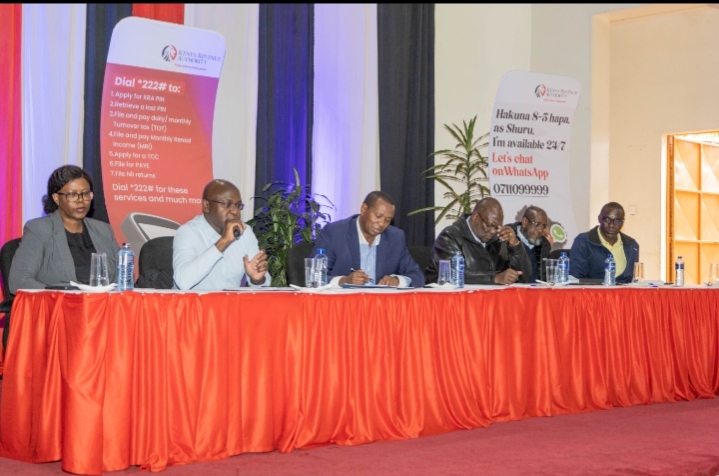Kenya Set to Roll Out National Emergency Care System in Landmark Health Reform

Dr. Mercy Mwangangi addresses a media briefing in Nairobi on the rollout of a national emergency care system that will provide free ambulance evacuation and 24-hour treatment for Kenyans in life-threatening conditions.
Nairobi, October 2025-Kenya is preparing to launch a nationwide emergency care and ambulance dispatch service aimed at ensuring timely response to life-threatening situations across the country, in what officials describe as a transformative step for the health sector.
The Social Health Authority (SHA), in partnership with the Ministry of Health and the Emergency Medicine Kenya Foundation (EMKF), has finalized a framework to operationalize the Emergency, Critical and Chronic Illness Fund (ECCIF). The initiative will guarantee that any Kenyan in a medical emergency can dial a toll-free number and receive immediate evacuation to the nearest equipped facility, regardless of whether they are formally registered under SHA.
Speaking during a media briefing in Nairobi, SHA officials underscored that emergency healthcare is a constitutional right and assured that the new system is not meant to replace county ambulance services but to complement and strengthen them.
“We acknowledge that emergency care services have long been a county function. What we are doing is complementing and financing a service that already exists to ensure that every Kenyan has access when they need it most,” said SHA CEO Dr. Mercy Mwangangi
How the system will work
Once operational, a centralised dispatch centre staffed with medically trained officers will triage calls and mobilise the nearest contracted ambulance using GPS tracking. Patients will then be evacuated to the closest emergency care centre capable of handling their condition.
According to SHA officials, the package covers evacuation for conditions such as cardiac arrest, stroke, severe bleeding, maternal complications, and other critical emergencies where “every minute counts.”
The evacuation cost within 25 kilometres will be reimbursed to ambulance providers at Sh4,500, with an additional Sh75 per kilometre charged beyond that distance. Both public and private ambulance operators meeting standards set by the Kenya Medical Practitioners and Dentists Council (KMPDC) will be contracted.
Importantly, the first 24 hours of emergency care after evacuation will be fully covered by SHA. However, patients will need to be registered and paid-up members of the Social Health Insurance Fund (SHIFT) to continue receiving benefits beyond the initial 24 hours.
> “Yes, the evacuation is free. Yes, the first 24 hours are free. But after that, unless you are a paid-up SHIFT member, you will revert to out-of-pocket costs,” the SHA CEO explained, urging Kenyans to register and pay their contributions.
Bridging life-and-death delays
Dr Benjamin wachira executive director of emergency medicine Kenya foundation, who has been part of the technical team developing the framework, stressed that the system is a “game changer” in reducing preventable deaths.
“For many years, mothers have died trying to get to hospital, and road accident victims have been left at crash scenes waiting for help. This system ensures that care starts in the community, not when you arrive at the hospital,”said Dr wachira
He also added that the program adopts the World Health Organization (WHO) Emergency Care System Framework, which emphasizes bystander action, prompt transportation, and 24-hour hospital readiness.
Public awareness key to success
Teh SHA Officials highlighted the need for Kenyans to know and use the toll-free number, which will be shared at the official launch graced by President William Ruto in the coming months.
She also said that the system will also integrate telephonic triage, where dispatchers can guide callers through basic first aid steps while waiting for an ambulance. “Even if you don’t know medical terms, describing that someone is bleeding heavily or cannot walk is enough for dispatchers to recognise it as an emergency,”Dr wachira assured.
Long journey to reform
The initiative builds on commitments made in the 2010 Constitution, which enshrined the right to emergency medical care, and the Kenya Emergency Medical Care Policy 2020–2030, launched after the COVID-19 pandemic.
Since then, Kenya has worked to establish an integrated ambulance service, with counties and private players providing scattered coverage. The new SHA system seeks to harmonize and scale these efforts nationally.
SHA estimates that over 26 million Kenyans are already accessing basic primary healthcare through its programs, but stressed that emergency care requires sustainable financing.
“Emergencies will not wait for anyone. Unless you are lucky to die in your sleep, you or your loved ones will one day need emergency care. That is why this fund exists — to remove cost discussions at the point of death and replace fear with hope,” Dr. Wachira noted.
Looking ahead
Officials said the program will also extend to water ambulances in counties where transport is dependent on boats, and eventually expand to include air evacuation in remote areas.
As the country readies for the official rollout, stakeholders emphasised that success will depend on community awareness, prompt registration into SHIFT, and efficient coordination between national and county governments.
“This is not just a policy; it is a promise in motion. Every life matters. Together, we can build an emergency system that saves lives and restores dignity,” the SHA CEO concluded.





